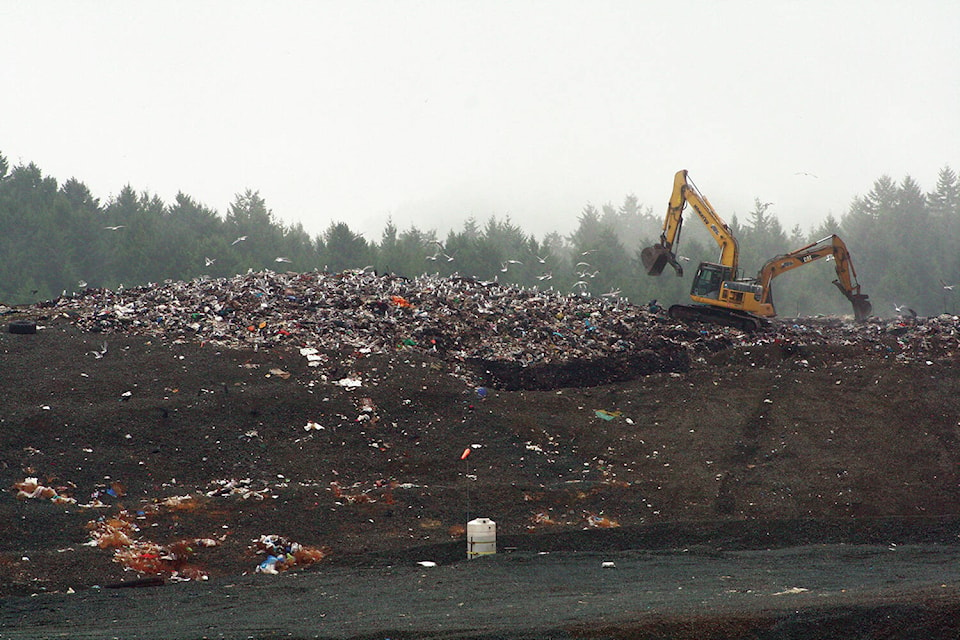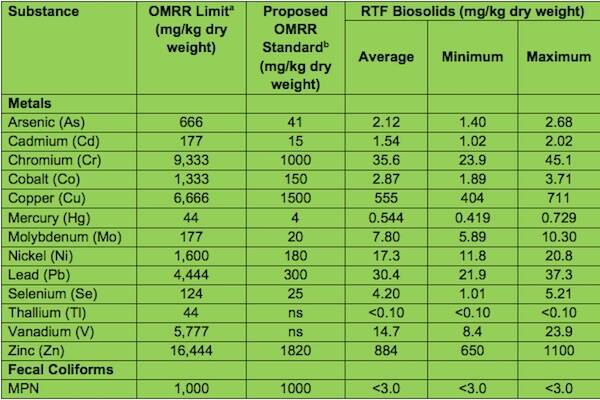More than 2,100 tonnes of the Capital Regional District’s treated sewage went into the landfill last year, and the region is poised to continue a practise that could prove contentious with regulators.
The CRD landfilled its Class A biosolids on more than 300 days in 2022 when its backup plans only envision doing so a max of 35 times annually.
The province requires the region to have a beneficial use for its biosolids and it prohibits the CRD from landfilling the dried, pellet-like end-product.
The CRD’s approved beneficial use includes shipping the biosolids to Richmond’s Lafarge cement plant, where the product is used as an alternative fuel in the place of coal.
Planned and unplanned issues at the plant have led to Lafarge not being able to take the biosolids at many points in recent years and it only took in 14 per cent of what the CRD produced in 2022.
About a fifth of all biosolids produced last year went towards land application – the CRD’s main contingency plan when the Lafarge plant is down – where they’re used to make a product that supports vegetation growth at the Hartland property. Biosolids had to be landfilled after the CRD reached its land application capacity. Local groups, once again, called for an end to the practise this month over concerns for the environment and waterways around Hartland.
The region’s environmental services committee on Jan. 18 recommended that the CRD board approve continuing biosolid landfilling while other short-term solutions are considered. The committee’s directors chose that route – despite it not being a provincially-approved short-term plan or beneficial use – over staff’s recommended strategy.
Staff’s plan included shipping the biosolids to several non-agricultural projects near Nanaimo where they say the biosolids would be used to for enhance forest fertilization and repair past industrial sites. That would meet regulatory direction, divert material away from landfill and would cost about half as much as landfilling the product.
Directors struggled with the lack of short-term options, while those begrudgingly supportive of staff’s direction worried about continuing to illegally landfill the material at Hartland. B.C.’s environment ministry told Black Press Media it will review the CRD’s current activities to determine if they meet regulatory requirements.
“We’re (between) a rock and a hard place, we just in the short term don’t have an option here,” said director Gary Holman.
Some said it would be hypocritical to land apply the product in Nanaimo when the CRD itself doesn’t fully support the practise.
“I personally can’t support this because of my belief that we are doing more harm than good by applying biosolids on land,” committee chair Barb Desjardins said.
Class A biosolids must meet standards around containing safe levels of metals, pathogens and bacteria. Those produced in the CRD contain far lower concentrations than the maximums allowed by the province.
“There is scientific consensus among research and regulatory communities that with proper planning and controls, the application of biosolids to land can have many benefits and minimal risks,” staff said.
The CRD in the spring will get an update on the viability of several thermal processing pilots that could be long-term beneficial use solutions for the region’s biosolids.
But the general manager of parks and environmental services said the planning stage of those long-term options is still months away.
“I would say that we have an issue today with managing biosolids,” said Larisa Hutcheson. “At this point in time, we do need a stopgap alternative contingency plan.”
READ: CRD looks to gasification, other pilots as possible long-term waste solutions
jake.romphf@blackpress.ca. Follow us on Instagram. Like us on Facebook and follow us on Twitter.




